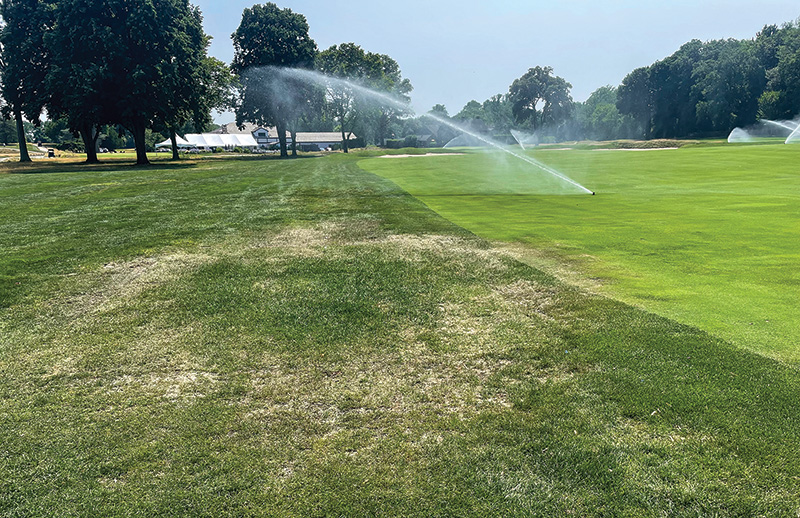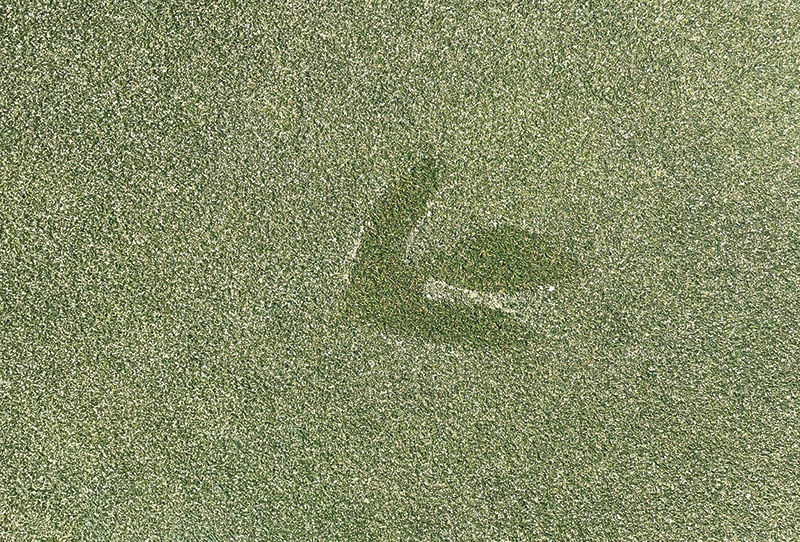Problem A: Persistent brown circle on turf

Location: Sands Point, N.Y.
Turfgrass area: Fairway rough
Turfgrass variety: Bluegrass/Poa annua/ryegrass/fescue rough; Poa annua fairway
Problem B: Strange shape on turf

Location: West Orange, N.J.
Turfgrass area: Putting area
Turfgrass variety: Poa annua/bentgrass
Scroll down for answers.

Problem A: Persistent brown circle on turf
If you were able to guess this one, you excel at photo quizzes. What caused this persistent brown circular area on the rough that was also creeping into the fairway not only perplexed me, but it also stumped the golf course superintendent for almost a year. When the area first appeared last summer, it was a small area that was thinning out and seemed to stay a little wet. The superintendent thought it could have been disease, but that didn’t make sense. It almost looked like something may have been oversprayed or spilled. The crew resodded the area in the fall, and this spring the sod didn’t look good. The brown area grew and started to creep into the fairway. On a hot, humid and stagnant day when the air was heavy, the superintendent drove by this area. He smelled natural gas and connected the dots. The brown spot was in line with the main gas feed from the street to the clubhouse. Sure enough, after being called, the utility company came out within the hour and detected a gas leak. The leak is 1,000 feet from the road and 1,000 feet from the clubhouse, so it is on the bottom of the priority list to get fixed. Once the leak is repaired, the golf course crew will remove and replace the top foot or so of soil and resod the area again.
Photograph submitted by Pat Ryan, CGCS, a 22-year member of GCSAA.

Problem B: Strange shape on turf
The strange shape on this golf green is not the result of an errant dinosaur escaping from the new Jurassic Park Research Lab. It is simply a sassafras leaf that fell on the green before it was lightly topdressed. This course applies an ultra-light greens sand topdressing to the greens about every two weeks. Sand topdressing is the most important cultural practice for managing organic matter. Recent research confirms the benefits of light and frequent sand topdressing programs that provide less immediate disruption, better playing conditions and better root zone characteristics over time, as well as producing smooth putting surfaces. After the light topdressing application, the staff brushes the topdressing in unless the weather is too hot.
Photograph submitted by Vanja Drasler, GCSAA Class A golf course superintendent for Third and Fourth Nine at Montclair Golf Club in West Orange, N.J. She is a nine-year member of GCSAA.
Editor’s note: Have a photo of an on-course anomaly? GCM would love to have a look! Email it to Photo Quiz author John Mascaro.
John Mascaro is the president of Turf-Tec International.